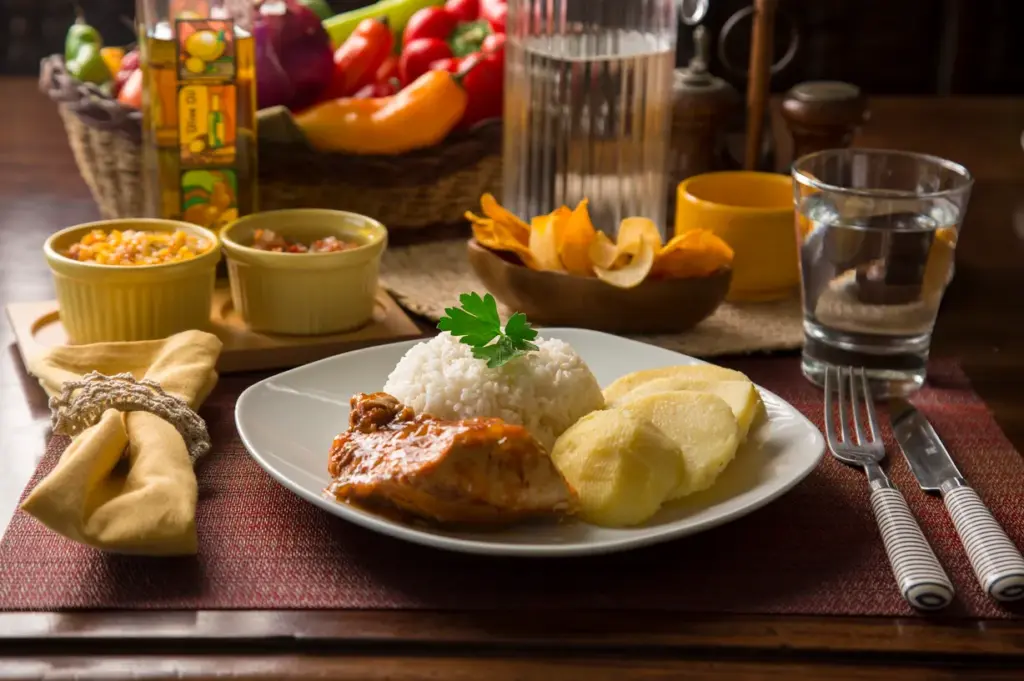Brazilian Cuisine: Discovering the World of Feijoada and Pão de Queijo
Introduction
Brazilian cuisine is a vibrant and mouth-watering journey that reflects the diverse culture and rich culinary heritage of the country. At the heart of Brazilian food culture are two iconic dishes: Feijoada and Pão de Queijo. Both dishes are celebrated for their unique flavors, ingredients, and the tradition they represent.
For travelers seeking an authentic taste of Brazil, exploring these dishes offers a tantalizing glimpse into the nation’s culinary soul. Whether you’re a seasoned foodie or a curious traveler, Brazilian cuisine promises an adventure for your taste buds.
The Rich History of Brazilian Cuisine
Brazilian cuisine is a melting pot of influences, blending indigenous, African, and Portuguese flavors. This culinary fusion has given rise to distinctive dishes that are as diverse as the country itself. The use of native ingredients like cassava, açaí, and tropical fruits is evident in numerous recipes, reflecting Brazil’s abundant natural resources.
The African influence in Brazilian cuisine is particularly significant, stemming from the African slaves who were brought to Brazil during the colonial period. They introduced new cooking techniques and ingredients, such as palm oil (dendê) and okra, which have since become staples in Brazilian dishes. Meanwhile, the Portuguese left their mark through their love for salted cod and hearty stews.
Feijoada: The Heart of Brazilian Cuisine
Feijoada is often considered the national dish of Brazil. This savory black bean stew is traditionally made with a variety of pork cuts, including sausages, ribs, and sometimes even pig’s feet and ears. It’s a dish that embodies comfort and warmth, often served with rice, collard greens, and orange slices to balance the richness.
The origins of Feijoada are deeply rooted in Brazilian history. It is believed to have been created by enslaved Africans who combined leftover meat pieces with black beans, a staple in their diet. Over time, this humble dish evolved into a beloved symbol of Brazilian culinary identity.
The Ingredients of Feijoada
The key to a delicious Feijoada lies in its ingredients. Black beans form the base of the stew, providing a rich and earthy flavor. Various cuts of pork, such as bacon, pork shoulder, and chorizo, add depth and complexity to the dish. Additionally, bay leaves, garlic, onions, and other seasonings are used to enhance the aroma and taste.
Preparing Feijoada is a labor of love, often requiring several hours of slow-cooking to meld the flavors together. This lengthy cooking process allows the meat to become tender and the beans to absorb the savory essence of the pork.
How to Enjoy Feijoada
Feijoada is typically enjoyed as a communal meal, often prepared for family gatherings and special occasions. The dish is usually served with a side of white rice, which helps to balance the robust flavors of the stew. Collard greens add a touch of bitterness, while orange slices provide a refreshing contrast to the heaviness of the meat.
In many Brazilian households, Feijoada is accompanied by farofa, a toasted cassava flour mixture that adds a delightful crunch. A drizzle of hot sauce can also be added for those who enjoy a bit of heat.
Pão de Queijo: Brazil’s Cheese Bread Delight
Pão de Queijo, or cheese bread, is another beloved Brazilian treat. These small, golden-brown balls are made from tapioca flour and cheese, resulting in a chewy and airy texture. Pão de Queijo is often enjoyed as a snack or breakfast item and is perfect for any cheese lover.
The origins of Pão de Queijo can be traced back to the state of Minas Gerais, where it remains a regional specialty. The use of tapioca flour sets it apart from other cheese breads around the world, giving it a unique and addictive quality.
The Ingredients and Preparation of Pão de Queijo
Making Pão de Queijo is relatively simple, requiring just a few basic ingredients: tapioca flour, milk, eggs, oil, and cheese. The type of cheese used can vary, but Minas cheese, a type of fresh Brazilian cheese, is the traditional choice.
The dough is created by mixing the ingredients together until a smooth consistency is achieved. It is then rolled into small balls and baked until golden and puffed. The result is a delightful combination of crispiness on the outside and a soft, cheesy interior.
How to Enjoy Pão de Queijo
Pão de Queijo is best enjoyed fresh out of the oven when it is still warm and the cheese is gooey. These cheese breads can be eaten on their own or paired with a variety of accompaniments. They are especially delightful when served with a cup of Brazilian coffee.
For a savory twist, Pão de Queijo can be filled with ingredients like ham, herbs, or additional cheese. Their versatility makes them a popular choice for breakfast, snacks, or even as an appetizer at social gatherings.
Exploring Brazilian Cuisine Beyond Feijoada and Pão de Queijo
While Feijoada and Pão de Queijo are standout dishes, Brazilian cuisine offers a plethora of other delightful options. From the coastal seafood dishes of Bahia to the hearty meat-centric cuisine of Rio Grande do Sul, there is something to please every palate.
Brazilian street food, known as ‘comida de rua,’ is another aspect not to be missed. Coxinha, a crispy chicken croquette, and pastéis, fried pastries filled with various ingredients, are popular street snacks that showcase the country’s love for bold and satisfying flavors.
Encouraging Visitors to Experience Brazilian Cuisine
Visiting Brazil provides an unparalleled opportunity to immerse oneself in its culinary wonders. From bustling markets to traditional restaurants, there are countless places to experience authentic Brazilian food.
For those who cannot travel to Brazil, many Brazilian communities around the world offer a taste of home through restaurants and food festivals. These gatherings allow visitors to sample dishes like Feijoada and Pão de Queijo, fostering a deeper appreciation for Brazilian culture.
Conclusion
Brazilian cuisine is a celebration of flavor, history, and tradition. Feijoada and Pão de Queijo are just the beginning of a culinary adventure that promises to captivate and delight. By exploring these iconic dishes, travelers can gain a deeper understanding of Brazil’s rich cultural tapestry.
Whether you’re planning a trip to Brazil or looking to try something new in your own kitchen, the world of Brazilian cuisine awaits. So take a culinary journey to Brazil and savor the delicious offerings this vibrant country has to offer.



